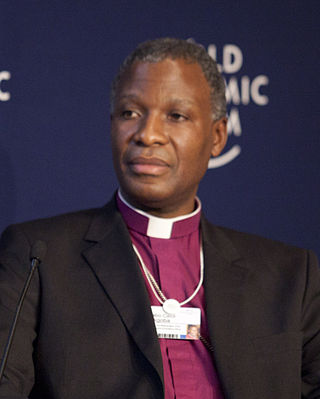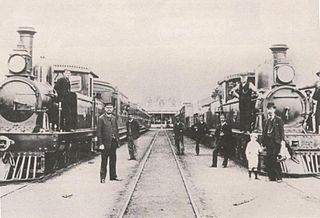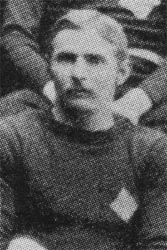
James Henry Greathead was an English mechanical and civil engineer renowned for his work on the London Underground railways, Winchester Cathedral, and Liverpool overhead railway, as well as being one of the earliest proponents of the English Channel, Irish Sea and Bristol Channel tunnels. His invention is also the reason that the London Underground is colloquially named the "Tube".

William Guybon Atherstone (1814–1898) was a medical practitioner, naturalist and geologist, one of the pioneers of South African geology and a member of the Cape Parliament.

Sir Herbert Baker was an English architect remembered as the dominant force in South African architecture for two decades, and a major designer of some of New Delhi's most notable government structures. He was born and died at Owletts in Cobham, Kent.

Makhanda, formerly known as Grahamstown, is a town of about 75,000 people in the Eastern Cape province of South Africa. It is situated about 110 kilometres (70 mi) northeast of Gqeberha and 130 kilometres (80 mi) southwest of East London. It is the largest town in the Makana Local Municipality, and the seat of the municipal council. It also hosts Rhodes University, the Eastern Cape Division of the High Court, the South African Library for the Blind (SALB), a diocese of the Anglican Church of Southern Africa, and 6 South African Infantry Battalion. Furthermore, located approximately 3 km south-east of the town lies the world renowned Waterloo Farm, the only estuarine fossil site in the world from 360 million years ago with exceptional soft-tissue preservation.

St. Andrew's College is an Anglican high school for boys located in Makhanda (Grahamstown), Eastern Cape province of South Africa. It was founded in 1855 by the Right Reverend John Armstrong, the first Bishop of Grahamstown. It is a semi-boarding school, with a number of day boys. St. Andrew's College caters to 480 pupils from around the globe. The school is also a member of the G30 Schools group and closely associated with its brother school, St. Andrew's Preparatory School, and its sister school the Diocesan School for Girls.

The Diocese of Cape Town is a diocese of the Anglican Church of Southern Africa (ACSA) which presently covers central Cape Town, some of its suburbs and the island of Tristan da Cunha, though in the past it has covered a much larger territory. The Ordinary of the diocese is Archbishop of Cape Town and ex officio Primate and Metropolitan of the ACSA. His seat is St. George's Cathedral in Cape Town.

Thabo Cecil Makgoba KStJ is the South African Anglican archbishop of Cape Town. He had served before as bishop of Grahamstown.
Oswald Peter Patrick Swartz is a South African Anglican bishop. He was the twelfth Bishop of Kimberley and Kuruman.
The College of the Transfiguration in Makhanda, Eastern Cape, is the only provincial residential college of the Anglican Church of Southern Africa, offering a contextual approach to theology studies.

Sister Henrietta, CSM and AA was a British nursing pioneer and Anglican religious sister. Through her influence and pressure the first state registration of nurses and midwives in the world was brought about when the Cape of Good Hope Medical and Pharmacy Act of 1891 passed into law. She was a member of the Anglican Community of St Michael and All Angels.

The Cape Government Railways (CGR) was the government-owned railway operator in the Cape Colony from 1874 until the creation of the South African Railways (SAR) in 1910.

Harry Churchill Boyes was a South African international rugby union winger.
Frederick York St Leger was the Irish founder of the Cape Times newspaper in South Africa, and an Anglican priest.

James Arthur Calata was a South African priest and politician. He was the Secretary-General of the African National Congress from 1936 to 1949. He was appointed a canon of the Grahamstown Cathedral making him the first Black canon in the Anglican Church of Southern Africa.
John Dowie Borthwick (1867–1936) was a veterinary surgeon in the Cape Colony.
Frederick George Slessor (1831–1905) was a British railway engineer who worked in England, India, South Africa, and continental Europe.
Ivan Mitford-Barberton (1896–1976) was a South African sculptor, writer and authority on heraldry.
Claude Albemarle Bettington was a mining engineer and a pioneer aviator from South Africa.
Major General Daniel Bolton was an English military engineer of the Corps of Royal Engineers, who served in the Peninsular War (1813–1814), Netherlands Campaign (1814–1815), army of occupation in France (1815–1818), in Canada (1823–1843), particularly as superintending engineer in the construction of the Rideau Canal (1832–1843) and as Commanding Royal Engineer at Harwich (1846–1847), New Zealand (1847–1853) and Cape of Good Hope (1855–1860).
Frederick Arundel Rogers was an English-born archdeacon in the Anglican Church and an amateur botanist. He extensively collected plants, especially in southern Africa.
This page is based on this
Wikipedia article Text is available under the
CC BY-SA 4.0 license; additional terms may apply.
Images, videos and audio are available under their respective licenses.












